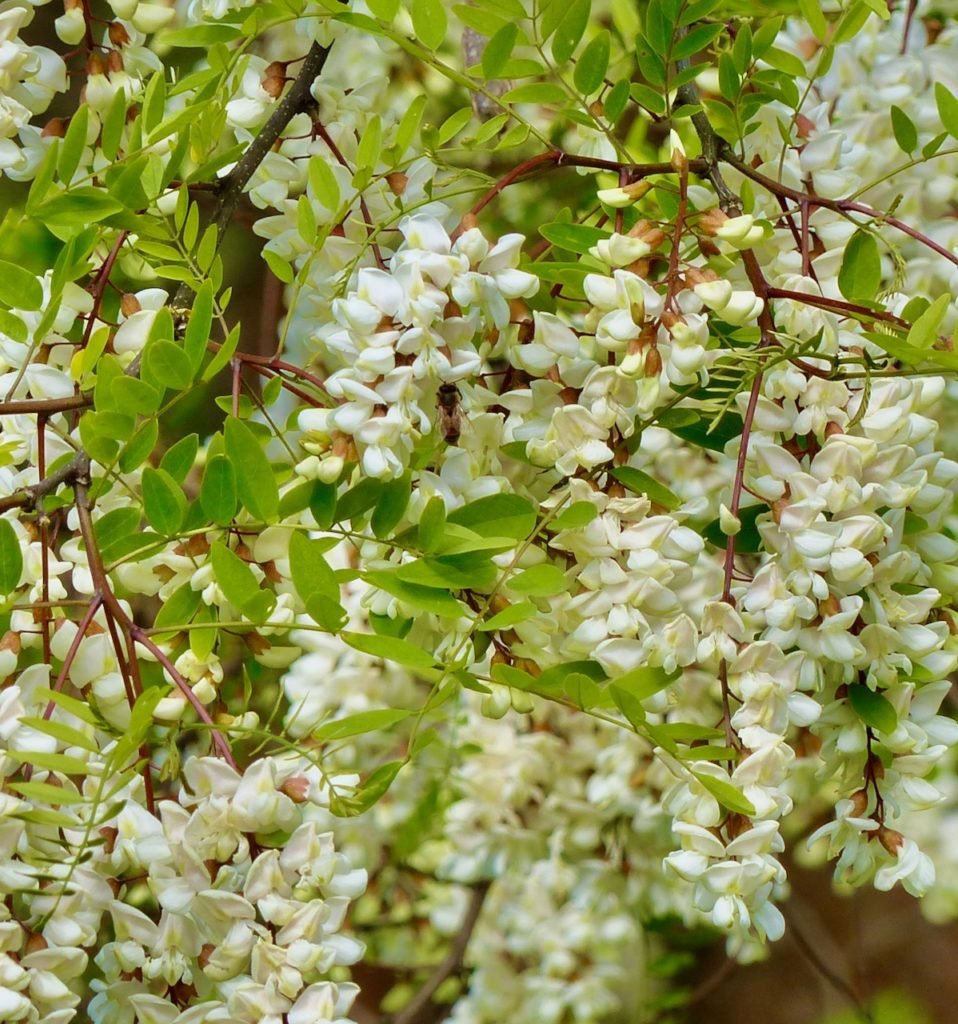Farming and Nature Proceed Despite the Pandemic—Swoope Almanac May 2020
Most of the world remains sequestered at home from the COVID-19 pandemic. Demonstrators with assault weapons dressed in military gear protest stay-at-home orders. You might get harassed for wearing a face mask in public. Our political divide widens.


Farming Proceeds Despite the Pandemic
On the farm, there are no politics and no required face masks. Grass grows and the cows eat it. In May the grass grows so fast the cows can’t keep up with it, so we harvest what they can’t eat and store it for winter feeding. The photo below shows a herd of our cows mob grazing a small area. Mob grazing is a method of eating the forage of a small area with a high stocking rate of cattle for a short period of time.

Nature Proceeds Despite the Pandemic
Nature doesn’t know politics either. Almost all the avian migrants have arrived for nesting. Swoope has many riparian buffers, which create a habitat that enables many species to prosper. One such species is the Gray Catbird. I saw eight of them in one tree and three more in the tree next to it.
By mid-May, Tree Swallows have laid their eggs, Eastern Bluebird babies have hatched. American Robin babies have already fledged their nests.


Of the 25 nest boxes I checked this morning (out of 50) 22 had Tree Swallow nests with eggs, two had Eastern Bluebird babies, and one had a mouse nest with bees! No House Sparrows—yeah!
Birder’s Paradise
Along our part of the Middle River, it’s a birder’s paradise. Today I saw a Yellow-Billed Cuckoo, a Northern Parula, and a Blackpoll Warbler. How cool is that? The Blackpoll Warbler is on his way to the Boreal Forests of Canada to breed. I don’t think we have a word for the feeling I get when, only for a moment, I connect to the life of such a long-distance traveler. I’m thankful we had a place for him to rest along the journey.
In late May, I can see or hear over 80 species of birds in Swoope, including Bobolinks; Willow, Alder, and Great-Crested Flycatchers; Eastern Kingbirds; Orchard and Baltimore Orioles; Red-Winged Blackbirds; Bald Eagles; Belted Kingfishers; and many more.

Native Trees in Bloom
Black Cherry and Black Locust trees are in full bloom. Their white blossoms can be seen from far away. These native trees provide nectar for the pollinators and food for wildlife. Their leaves shade the water in the streams and feed the aquatic ecosystem.


Invasives Abound
I lament the loss of our Green Ash trees. The big ones are all dead or nearly dead. The invasive Emerald Ash Borer devours the tree’s vascular system. There are whole groves and hedgerows full of the skeletons of these once-dominant streamside trees. The bark of the dying trees has a distinct color pattern of mottled light grey, dark grey, and pink.

We’ve been thinking it was Tall Phlox for years, but the beautiful tall flowing plants we see along the roads and streams are actually an invasive, nonnative plant from Eurasia. Its name is Dame’s Rocket. Its flowers have four petals whereas our native Tall Phlox has five.

No politics and no face masks are required along our part of Middle River. It is a joy to hear an oriole sing, to see a tiny bird on its way to the Boreal Forest of Canada, to feel the trunk of a towering tree we planted years ago, to smell the Black Locust blooms and hear the bees gathering its nectar.
When the pandemic is over, come join me on a walk along the river.
The post Farming and Nature Proceed Despite the Pandemic—Swoope Almanac May 2020 appeared first on Getting More on the Ground.


